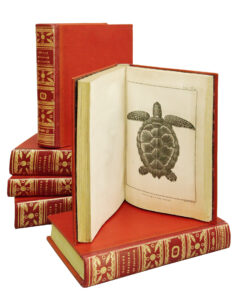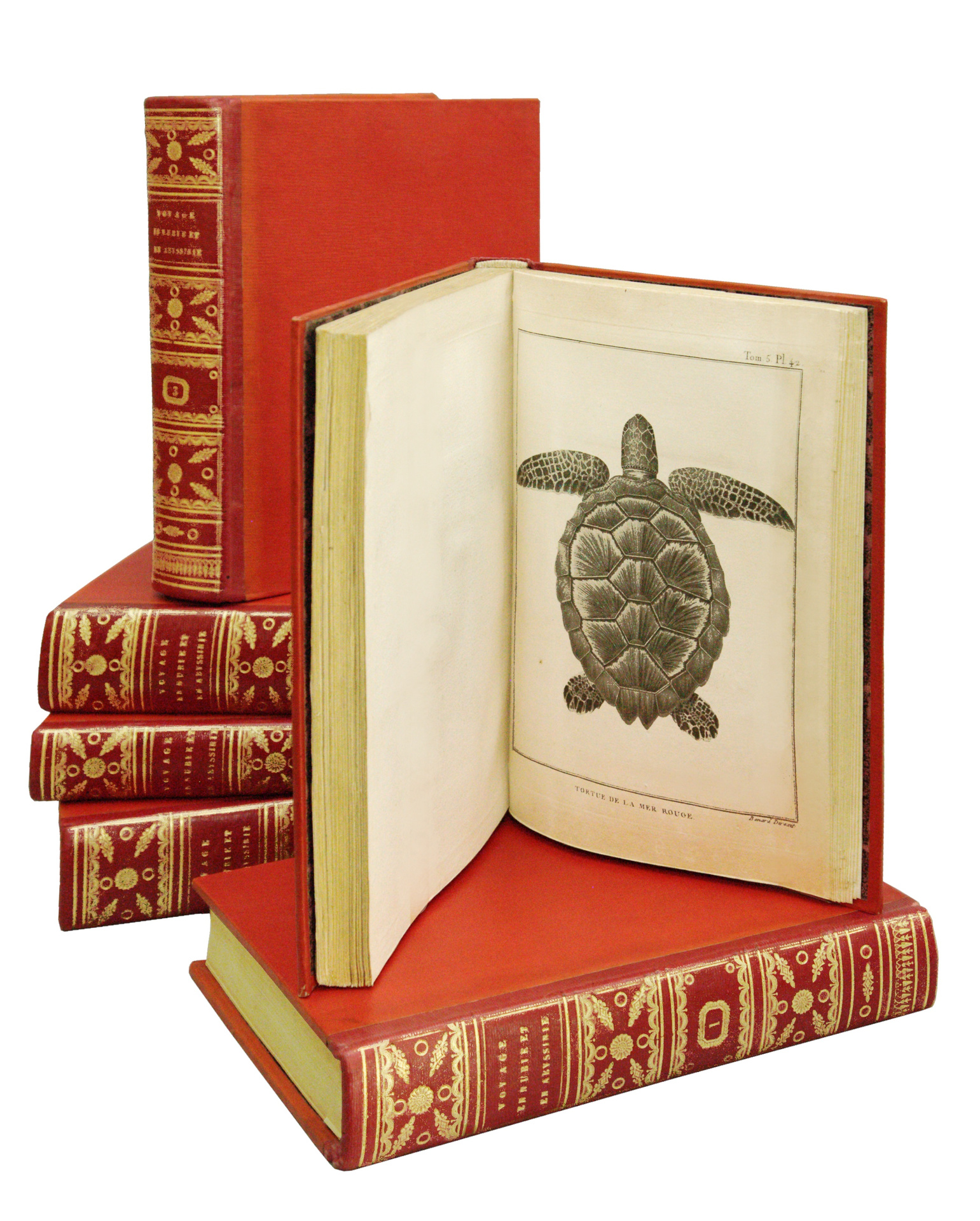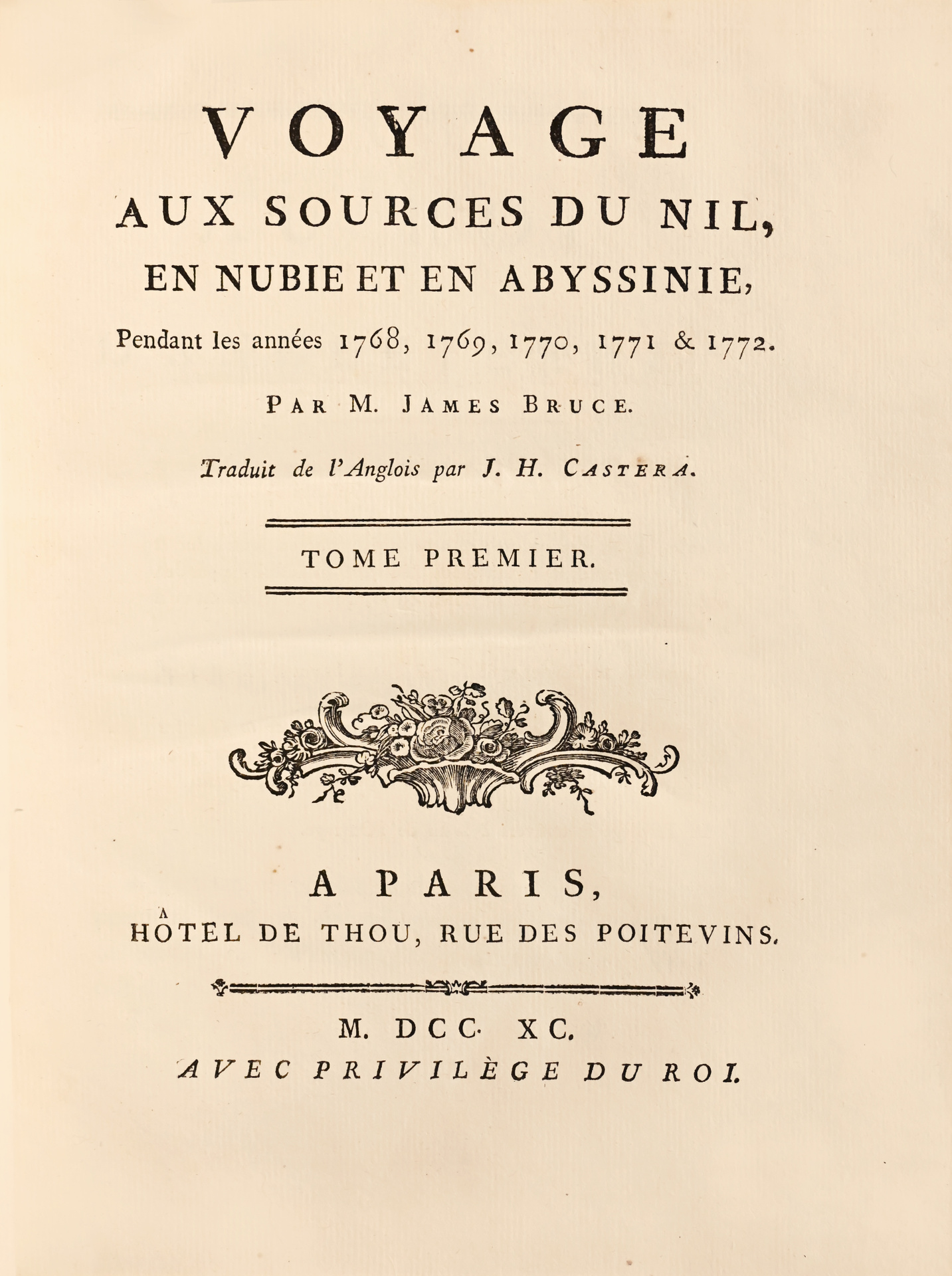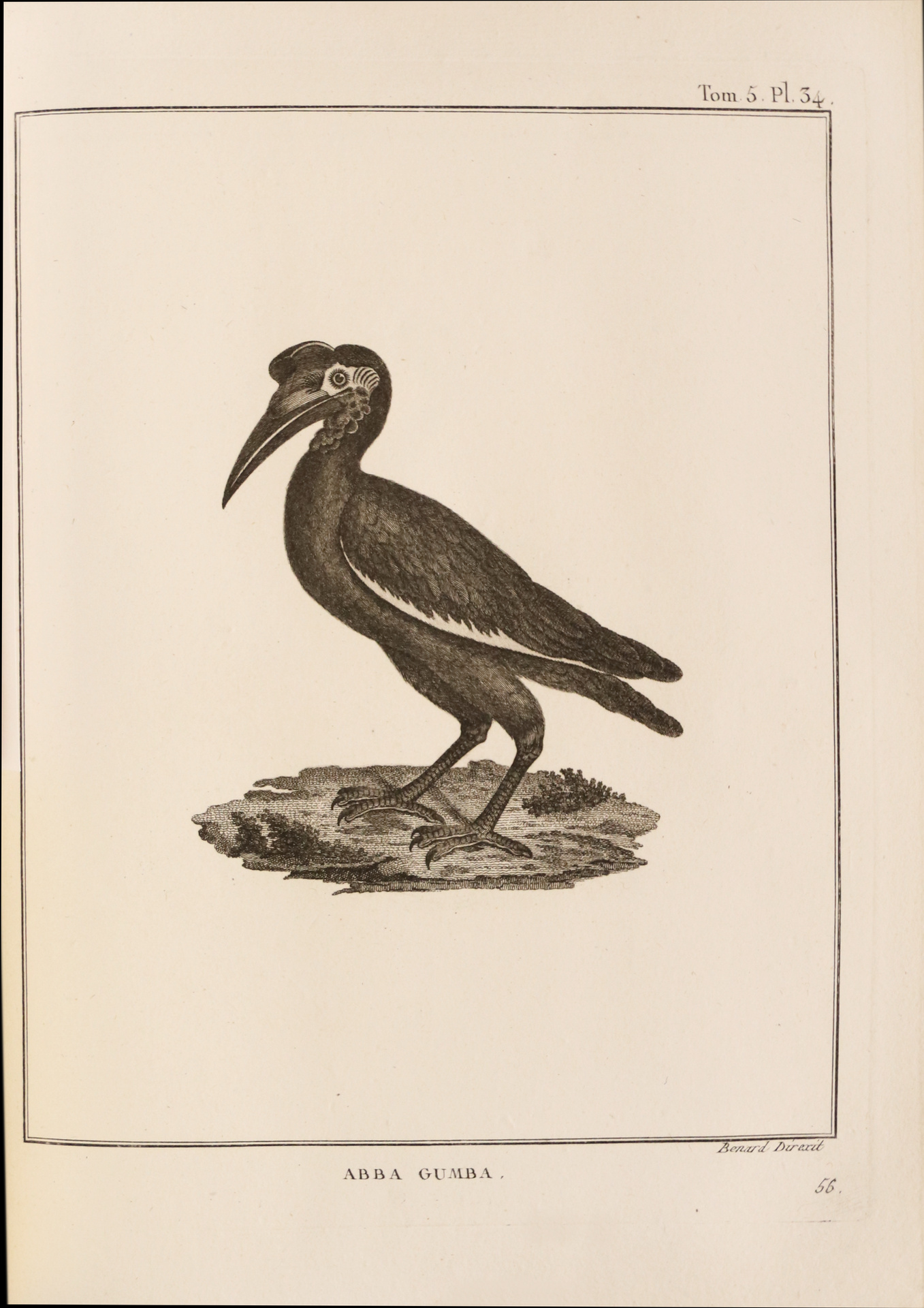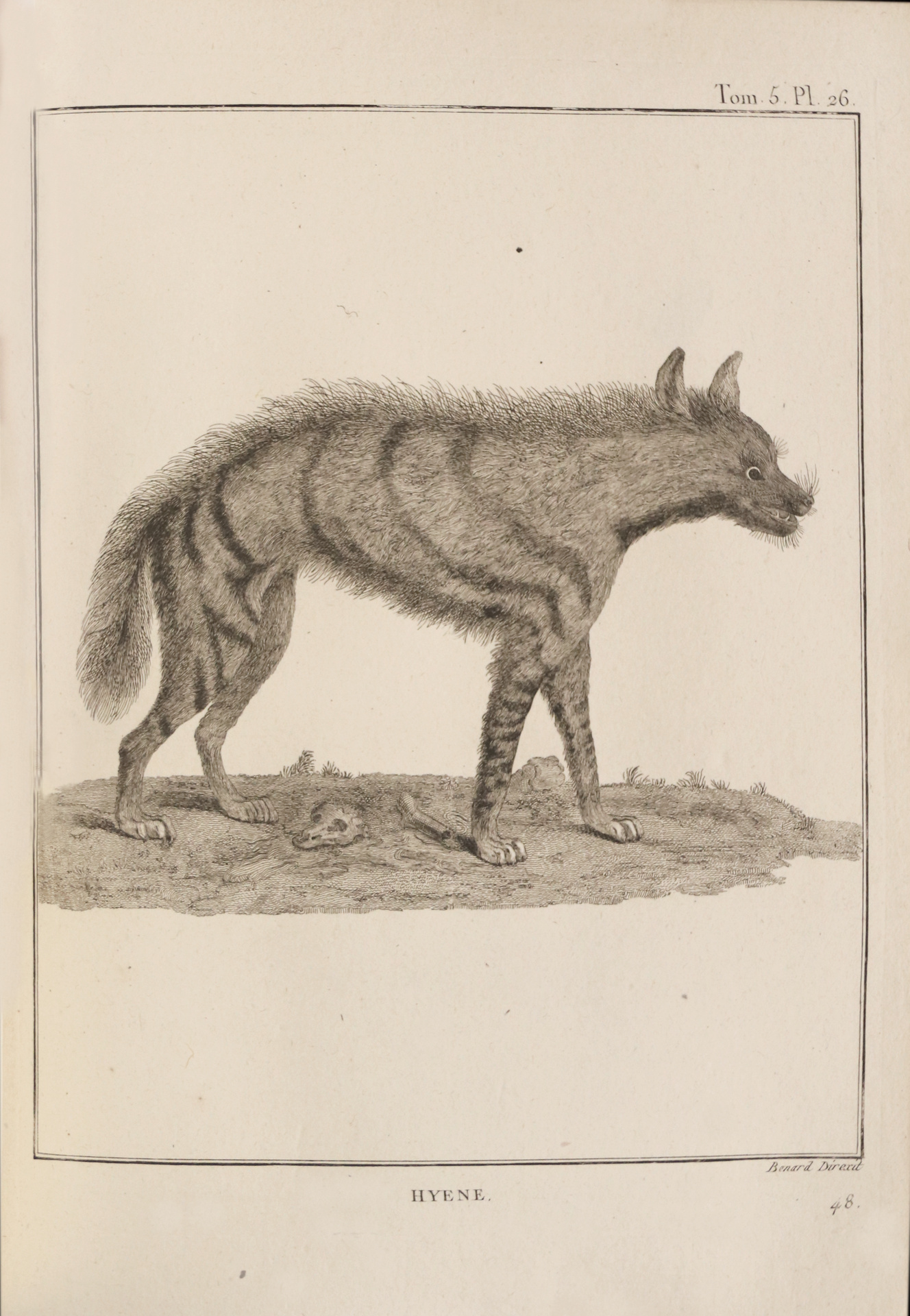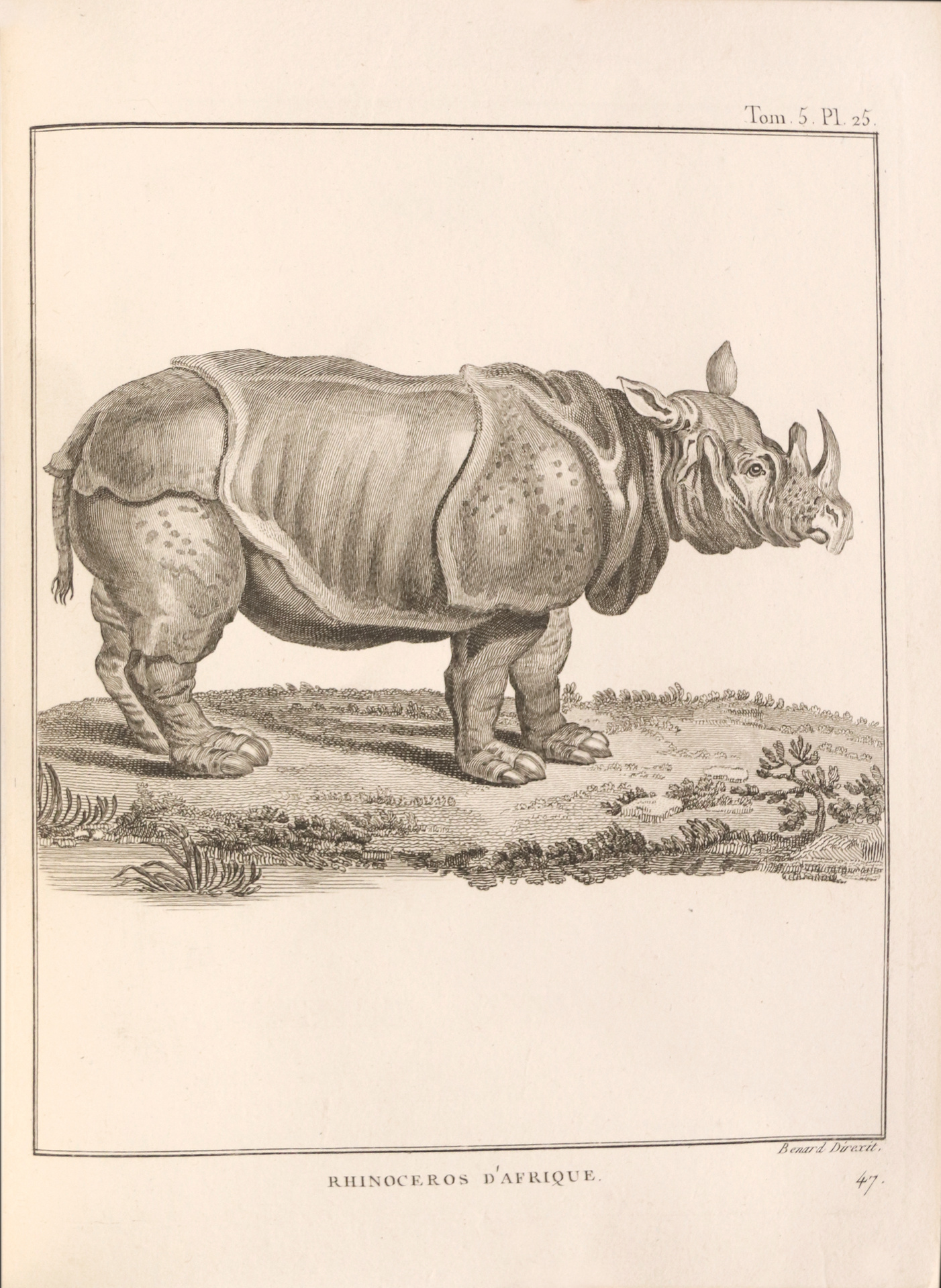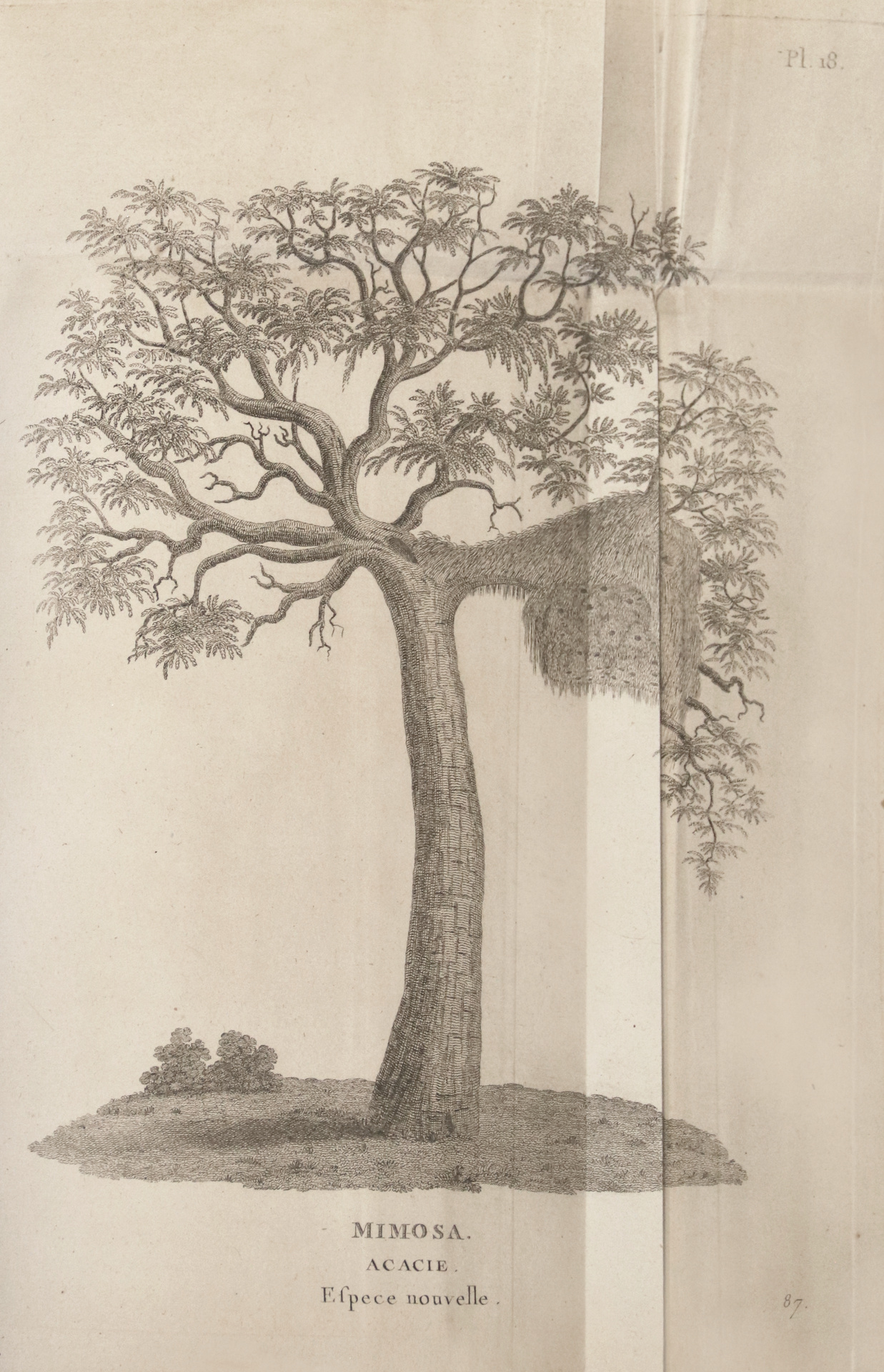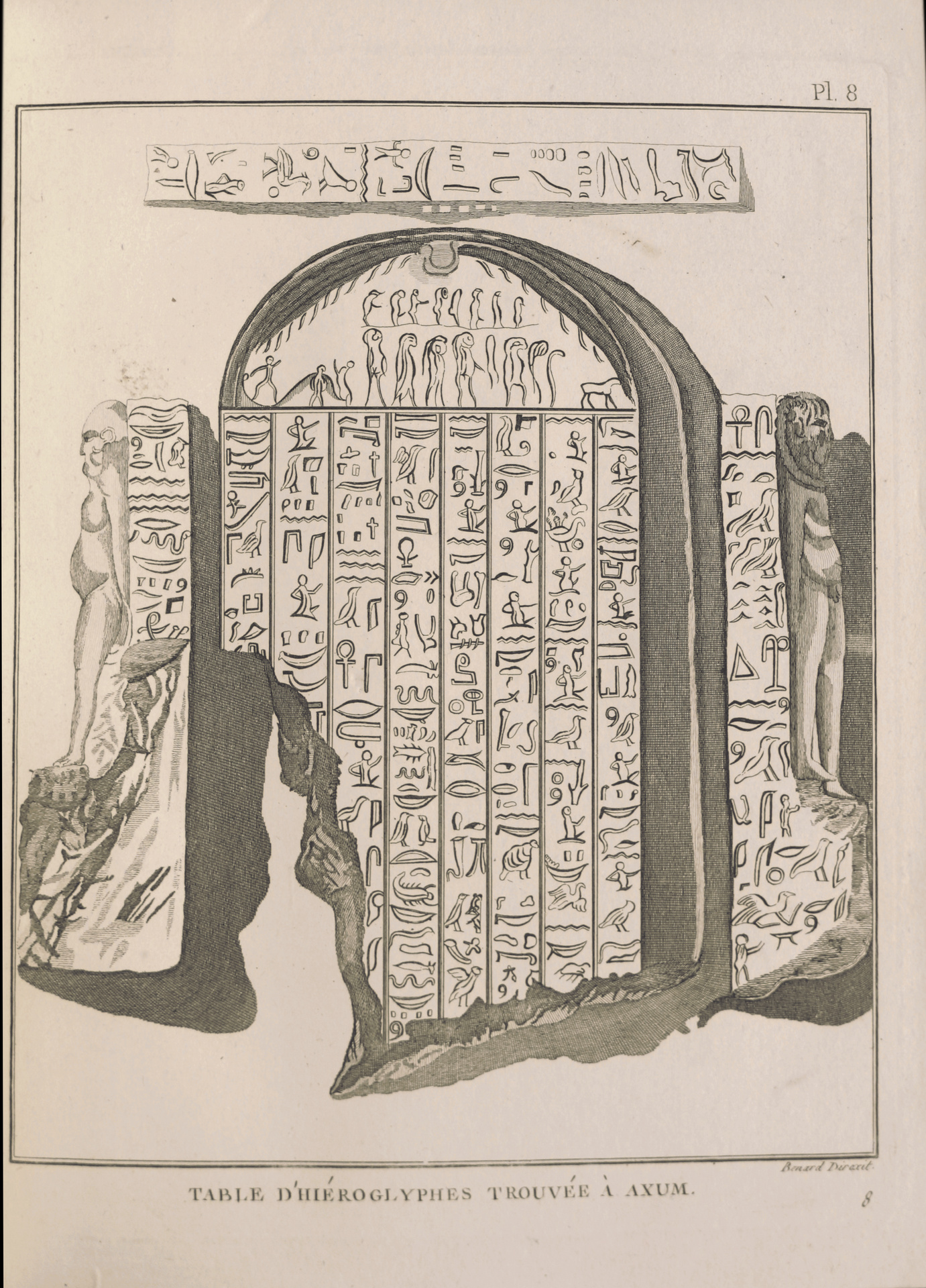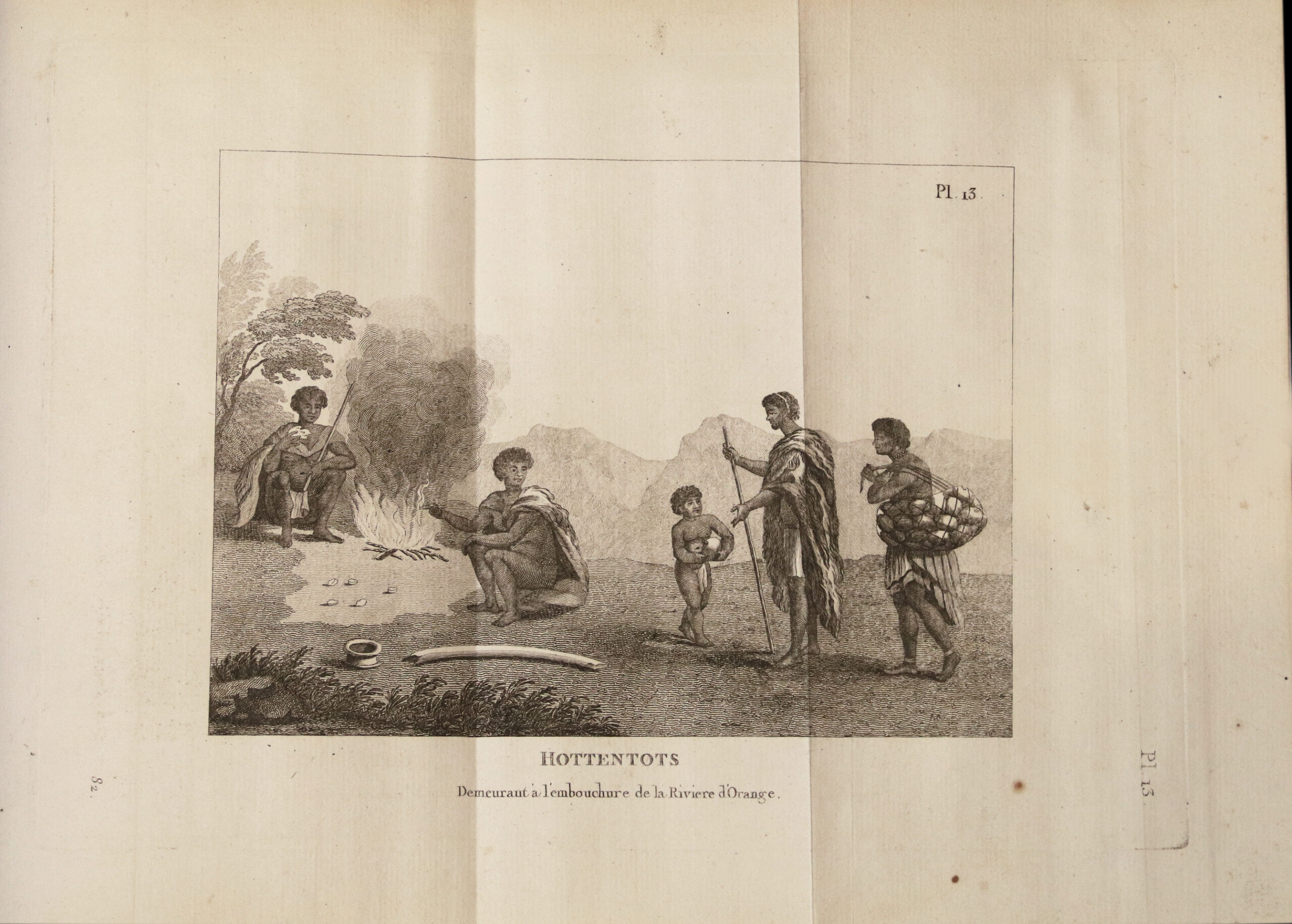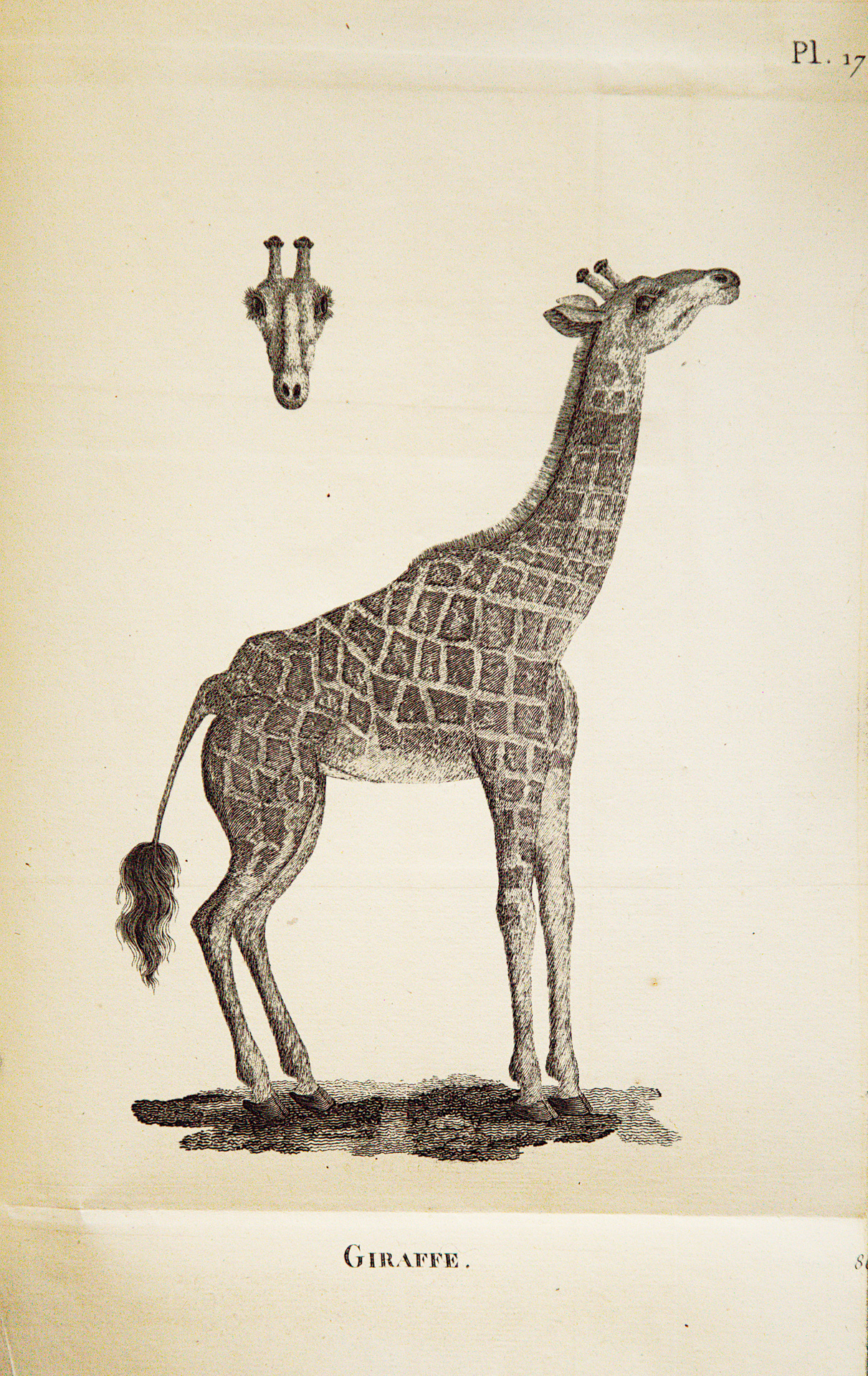Paris, Hötel de Thou, 1790 – 92.
6 volumes 4to of: I/ (2) ll., viii pp., lxxxiii, 620 pp., small tear in the margin of one page without loss ; II/ (2) ll., 784 pp., 1 large folding map; III/ (2) ll., 858 pp. (the quire Ttt has been bound twice in default of quire Vvv) ; IV/ (2) ll., 752 pp., (1) l. ; V/ (2) ll., 328 pp., cixiii pp. Atlas: (2) ll., 8 plates, 7 plates, 7 plates, 3 large folding maps, 43 plates, 19 plates. Which makes a total of 84 plates and 4 maps.
Red straight-grained half-morocco, decorated flat spines. Contemporary binding.
256 x 195 / 276 x 204 mm for the atlas.
First French edition of one of the best travel accounts to Africa.
Our copy is complete with all the folding maps and the full-page plates engraved by Bernard (65 for the Bruce; 19 for the Paterson), engraved head and tail-pieces; small vignettes on the title-pages.
Maps and plates of the Voyage de Bruce : 4 large folding maps for the Bruce (Route de Salomon, Tracé pour parvenir aux Sources du Nil, Golf d’Arabie, Mer Rouge), 2 plates of navigation (Canja à la voile), 2 plates of portraits and costumes (Sheik el Harb, Arabe de Leheia), 7 plates of text in Ethiopian alphabet, 1 map of the island of Masuah, 4 plates of antiquities (fresques trouvées à Thèbes, Tot, Hiéroglyphes & Obélisque trouvés à Axum), 1 plate of architecture (Plan et élévations d’un Mikeas), 4 plates of militaria (armes des Kasmatis, 1ère 2ème, 3ème bataille de Serbraxos), 24 plates of botany (Cyperus Papyrus, 2 x Balsamier de la Mecque, 3 x Mimosa, Ensecte, Kol-Quall (Euphrobe), Avicenne, Proté, and 19 plates of zoology (Rhinoceros, Hyène, Gerboise, Fennec, Ashkoko, Lynx botté, Aigle d’or et Aigle noir, Poule de Pharaon, Lerkoom, L’Ibis, Le Moroc, Mouche, La vipère Cornue, Le Binny, La Tortue de Mer, La Perle).
For Paterson’s Travels (second part of volume 5) : 1 large map (extrémité méridionale de l’Afrique), 14 plates of botany (Hemante à Ombelle, Aloe, Stapele, Euphorbe, Geranium, Pentandria Monogynia, Mimosa), 3 plates of zoology (Serpent cornu, Girafe, Loxia) and 2 plates representing Hottentots and houses of the Boschmens.
Content of the Bruce divided into 9 parts: I/ Cyprus, Alexandria, Rosette, Cairo; II/ History of the beginnings, the earliest people of Abyssinia and Atbara, Origin of their language; III/ History of the people from Abyssinia since the restoration of the lineage of Salomon until the death of Socinios; IV/ Sequel of the history of the people from Abyssinia since the death of Socinios until the end of the 18th century; V/ Road from Masuah to Gondar; VI/ First attempt to discover the Sources of the Nile; VII/ Return from the Sources of the Nile to Gondar, battle of Serbraxos; VIII/ Return through Senaar, Nubia and the great desert, Alexandria, Marseille, [Last book] / Natural History / Chart of the rain in Abyssinia / Temperatures.
Content of Paterson’s Travels: 1st and 2nd in the Hottentots country, 3rd in the country of Caddres, 4th in the country of the Mimiquoi. Appendice dealing with the fishes extracted from the plant and animal kingdoms, atmospheric observations.
James Bruce (1730-1794), Scottish, once nominated ambassador to Alger in 1763, started to explore Egypt, the Blue Nile, the desert of the Red Sea, Arabia and Abyssinia. He comes back to England in 1773 and publishes the account of his travels (Edinburgh 1790).
On a proposal from Lord Halifax, the goal of his trip was to discover the sources of the Nile but he only went back to the sources of a tributary, the Blue Nile.
This work is extraordinary for the adventure of the quest as much as the innovative scientific content.
« One can notice inside Bruce’s accounts some events so extraordinary that they often look like novels. The exactness of several facts that was at first contested was however admitted since then.” (Michaud)
James Bruce greatly contributed to the enrichment of the geographical knowledge concerning the Northern Africa. He also added a lot to the knowledge we had regarding the geography of Abyssinia, but he didn’t discover, as he thought he did, the sources of the Nile; he only went back to the source of the Nahr-el-Azrek, one of the main tributaries of the river. When he came back to Great-Britain in 1774, everybody thought he had died and his family had already split his goods. It is in 1790 that he published in 5 volumes 4to his travel account under the title “Travels to Discover the Source of the Nile“. (The 5th volume 4to contains the “Quatre voyages dans le pays des Hottentots“, translated from Paterson). Chadenat, 1062.
James Bruce can be considered as one of the earliest scientific explorers. He indeed collected with great rigour precise knowledge concerning the geography, fauna and flora, meteorology… His Voyage aux sources du Nil is one of the best travel accounts to Africa.
Our copy is in line with the collation given by Chadenat, with several maps and plates bound inside the atlas, whereas some copies are bound with the plates and maps inside the text volumes.
Extraordinary account of this famous Scottish traveler who, after giving a history of Abyssinia and his kings, tells his four year travel from Egypt to Gondar and to the sources of the Nile, and dedicates a volume to the natural history of this country. We can find, following this, the four travels of Paterson to the Hottentots and the Cafres of South Africa.
Exceptional and magnificent copy, one of very few recorded in a contemporary half-morocco binding preserved as new.
